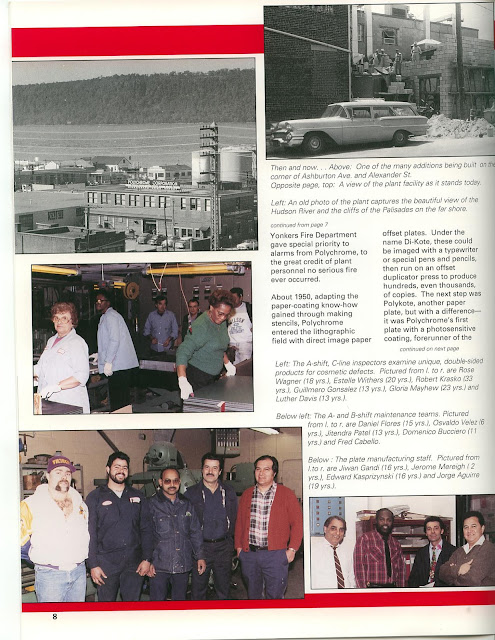In mid 1970 French chemical giant Rhone Poulenc owned large graphic arts product distributor which was one of Polychrome GmbH dealers in Europe. Mr. Halpern made an arrangement for them to invest in Polychrome as Polychrome was expanding into film production. Their investment eventually rose to own substantial (40%) part of outstanding Polychrome shares. One of the strength Polychrome GmbH had was the strong offering of negative plates useful in newspaper printing. The major competitor Kalle introduced in 1960's a new product called OPC (organic photoconductor) plate and by 1970 a direct camera platemaking system called Elfasol was on the market and it started making inroad to newspaper market. Since it bypasses the film making step, the closing time for newspaper could be pushed back and that was a tremendous advantage over the conventional film-plate system. Rhone Poulenc management was concerned about the threat of this emerging product and brought us their analysis of Kalle patents and components. The Yonkers lab made successful initial trial coating to demonstrate competitive performance. The formula was then transferred to Osterode for scale up. The OPC plate was successfully scaled up and was soon on the market as OPC-A to be sold into the Elfasol equipment as the alternative to Kalle offering. Although the customers were reluctant initially to take in competitor's plate they gradually accepted the role of the second source and OPC-A enjoyed reasonable acceptance. The GmbH management, however, realized soon that unless we have a dedicated equipment of our own further penetration was not possible. The Yonkers lab. was by then working on a new OPC we named OPC-B. Soon after the DIC purchase of Polychrome, technology team exchange was organized. During one of the visit to DIC, we realized that one of the DIC division, Imagaing Material Division, had a project for an OPC drum coating for copying machines and printers. The major components used for the drum coating was different from the one used in OPC-A plate and promised to have a higher light sensitivity. We brought back the information and the components and soon a new OPC plate, OPC-B, was born. This is the plate tested successfully on the Chemco Newsplater, a Elfasol like camera direct platemaking system with one major difference. Kalle used dry toner while Chemco used liquid toner. Chemco was then using an inorganic (zinc oxide) photoconductor as their plate and since we knew the shortcoming of zinc oxide plate on the press we had approached them earlier with OPC-A and determined that it did not have high enough sensitivity. Armed with the knowledge we went back to Chemco with OPC_B and successfully demonstrated that it matched the needed sensitivity and that also once made into a plate it performed just as an ordinary printing plate. The successful demonstration led us to cooperate with them to start beta testing at the Wall Street Journal Sharon PA plant in their new laser to plate platemaking attempt which then led their adoption of laser platemaking system in over half of their operating plants. The GmbH management sent an engineer to study the Chemco system and embarked on our own platemaking system. Like Elfasol, the OPC 2000 system was a "direct to plate" camera system with one major difference. Elfasol used a dry toner sytem and OPC 2000 a liquid toner system offering better resolution. Over 100 units of OPC 2000 were eventually installed throughout Europe.
So the famous Polychrome OPC plates were not Polychrome invention. Our contribution was just like Microsoft and Apple in good execution of someone's idea into customer friendly new products of our own.
Click HERE to view OPC 2000 brochure. In addition to the use of liquid toner, it had rotating copy holder to speed up production.










































